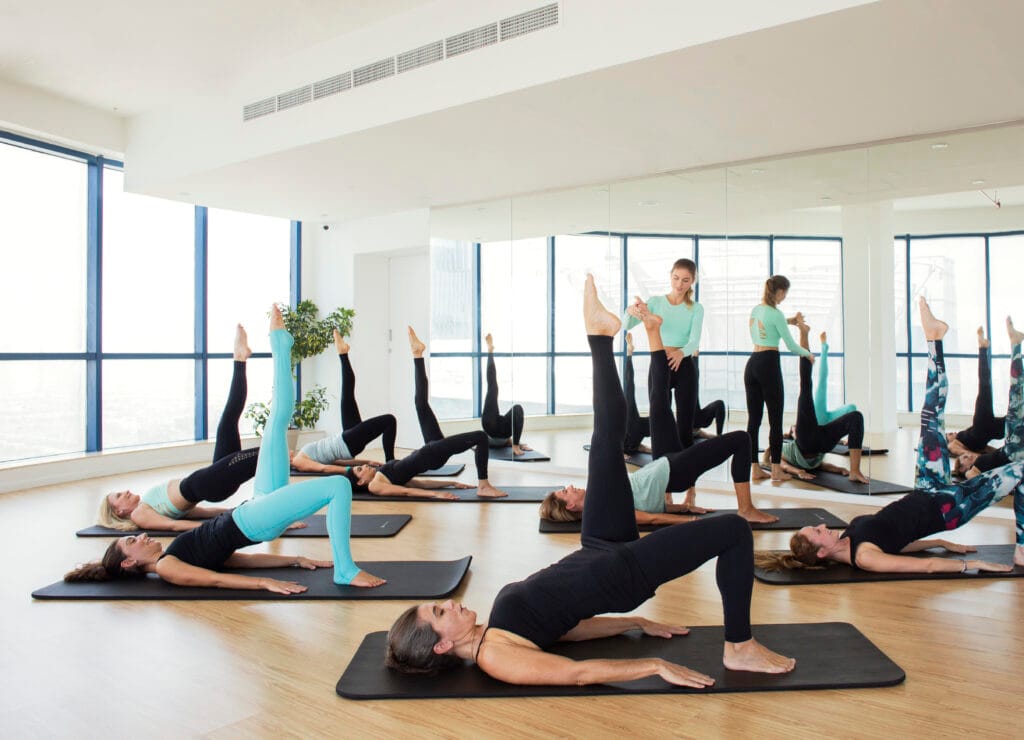Pilates has earned its place in the training programs of professional athletes, Olympians, and serious movers across disciplines. What was once considered a niche practice for dancers and the hyper-flexible has become a cornerstone of high-performance conditioning – and for good reason.
At its core, Pilates isn’t about aesthetics or trends. It’s a movement system designed to improve functional strength, control, and resilience, all while restoring balance and alignment to the body. For athletes, this makes it more than just a complement to sport – it makes it essential.
Here’s why serious athletes are turning to Pilates not just to enhance their game, but to protect their long-term performance.
In Pilates, the “core” is more than a buzzword. It’s the integrated system of deep stabilizers – including the transversus abdominis, multifidus, diaphragm, and pelvic floor – that supports posture, transfers force, and protects the spine under load.
For athletes, core strength is the engine behind power output. It allows for efficient energy transfer from the lower to upper body, supports explosive movement, and minimizes compensations. Without core control, force leaks. With it, performance improves and injury risk drops dramatically.
Pilates refines the way the body moves. It improves neuromuscular coordination, optimizes muscle recruitment, and teaches athletes how to move with precision rather than force.
Where traditional strength training often focuses on output and volume, Pilates is about how the movement happens. For athletes, this results in smoother mechanics, fewer wasted efforts, and a body that works smarter, not just harder.
Most athletes are asymmetrical by nature – favoring one side, repeating specific movement patterns, or overtraining particular muscle groups. Over time, this leads to imbalances that compromise both efficiency and joint integrity.
Pilates exposes these imbalances quickly. It’s designed to train the body as a whole, building symmetry, restoring alignment, and reinforcing weak links in the kinetic chain. This is especially valuable during off-season or recovery phases when athletes need to restore baseline function.
Breath is one of Pilates’ most underappreciated tools – and one of its most powerful. Through diaphragmatic and lateral ribcage breathing, athletes learn to coordinate movement with breath, reduce tension, and improve oxygen efficiency.
Better breath control supports greater endurance, faster recovery, and more consistent performance under physical and psychological stress. It’s a skill as valuable in the final minute of a match as it is during long blocks of training.
Athletes need more than strength – they need refined body awareness. Whether it’s knowing exactly where the foot is during a cutting movement or controlling rotation mid-air, proprioception is what allows for precision under pressure.
Pilates sharpens this system. Its focus on alignment, controlled transitions, and sensory feedback increases spatial awareness and improves motor timing. This makes the athlete more responsive, adaptable, and precise – even at full speed.
Injury prevention is about more than avoiding contact. It’s about developing structural integrity, joint control, and tissue resilience. Pilates strengthens stabilizers, improves joint range of motion, and reinforces proper loading mechanics – all of which reduce the risk of strain, overuse, or acute injury.
For athletes prone to ACL tears, rotator cuff issues, hip impingements, or chronic back pain, Pilates serves as an active insurance policy.
Recovery isn’t just about rest – it’s about restoration. Pilates supports recovery by promoting circulation, reducing muscular tension, and reinforcing efficient movement patterns after fatigue or injury.
It can also be adapted to post-rehab stages, bridging the gap between physiotherapy and return to play. With careful programming, athletes can use Pilates to stay moving safely while regaining strength, mobility, and confidence.
Flexibility without control can be just as risky as stiffness. Pilates builds active flexibility – strength through range – rather than passive stretching. This helps athletes move freely without compromising joint stability.
For sports that require dynamic range (think swimming, martial arts, or gymnastics), this type of flexibility is far more valuable than traditional stretching routines.
Overtraining is a common trap in high-level sport – and it often leads to breakdowns in both the body and nervous system. Pilates offers a way to continue training during heavy seasons or injury recovery without adding strain or volume.
Its low-impact nature and emphasis on nervous system regulation makes it ideal for active recovery, mid-season reset sessions, or technical movement work. It’s how athletes stay conditioned without tipping into fatigue.
Pilates requires presence. Unlike autopilot workouts, Pilates demands attention to alignment, breath, coordination, and subtle correction. This builds mental discipline, pattern recognition, and focus – all critical in high-stakes athletic environments.
It also offers a meditative aspect to training, helping athletes regulate their stress responses, improve mental clarity, and build stronger mind-body connection.
Athletes train for moments – for a gold medal, a goal, a win. But their careers depend on what happens in between those moments: how they recover, how they adapt, and how they care for the engine of their performance – their body.
Pilates is not a replacement for sport-specific training. It’s the support system that keeps the machine running. It improves efficiency, sharpens awareness, prevents breakdowns, and builds the foundation needed for high performance over time.
In a field obsessed with intensity, output, and extremes, Pilates brings something that’s often missing – precision, control, and intelligent movement.
For any athlete serious about longevity, recovery, and performance, Pilates isn’t just helpful – it’s non-negotiable.
Stay connected. Get the latest updates on Pilates insights, events, and opportunities straight to your inbox.
